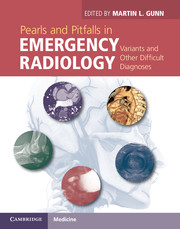Book contents
- Frontmatter
- Contents
- List of contributors
- Preface
- Acknowledgments
- Section 1 Brain, head, and neck
- Section 2 Spine
- Section 3 Thorax
- Section 4 Cardiovascular
- Section 5 Abdomen
- Case 50 Simulated active bleeding
- Case 51 Pseudopneumoperitoneum
- Case 52 Intra-abdominal focal fat infarction: epiploic appendagitis and omental infarction
- Case 53 False-negative and False-positive FAST
- Liver and biliary
- Spleen
- Pancreas
- Bowel
- Kidney and ureter
- Section 6 Pelvis
- Section 7 Musculoskeletal
- Section 8 Pediatrics
- Index
- References
Case 53 - False-negative and False-positive FAST
from Section 5 - Abdomen
Published online by Cambridge University Press: 05 March 2013
- Frontmatter
- Contents
- List of contributors
- Preface
- Acknowledgments
- Section 1 Brain, head, and neck
- Section 2 Spine
- Section 3 Thorax
- Section 4 Cardiovascular
- Section 5 Abdomen
- Case 50 Simulated active bleeding
- Case 51 Pseudopneumoperitoneum
- Case 52 Intra-abdominal focal fat infarction: epiploic appendagitis and omental infarction
- Case 53 False-negative and False-positive FAST
- Liver and biliary
- Spleen
- Pancreas
- Bowel
- Kidney and ureter
- Section 6 Pelvis
- Section 7 Musculoskeletal
- Section 8 Pediatrics
- Index
- References
Summary
Imaging description
Focused assessment with sonography for trauma (FAST) is an adjunct to the American College of Surgeons’ Advanced Trauma Life Support (ATLS) primary survey.
Unfortunately, there are very few prospective randomized trials that examine the efficacy and effectiveness of FAST on patients with blunt abdominal trauma [1]. Multiple retrospective studies have generally demonstrated a high specificity (≥95%), but widely ranging sensitivity (43–89%) for the detection on free intraperitoneal fluid [2–5]. Consequently, a negative FAST examination should not be considered as a means of excluding significant abdominal injury, especially in the hemodynamically stable patient. Moreover, FAST has not been shown to conclusively reduce the rate of trauma laparotomy or diagnostic peritoneal lavage (DPL), although it might lead to a slight reduction in the rate of CT scanning [1]. Limited data suggest a follow-up FAST scan might increase sensitivity [6, 7]. However, if there is a high pre-test probability of an abdominal injury, contrast-enhanced CT should be considered [1] following a negative FAST.
- Type
- Chapter
- Information
- Pearls and Pitfalls in Emergency RadiologyVariants and Other Difficult Diagnoses, pp. 175 - 178Publisher: Cambridge University PressPrint publication year: 2013

